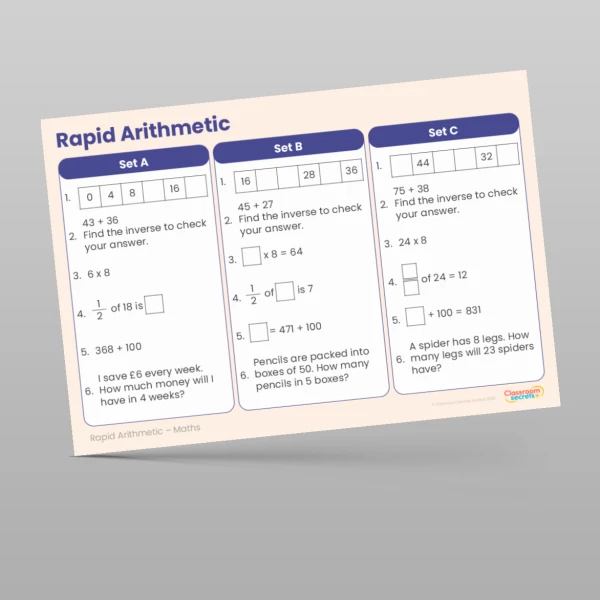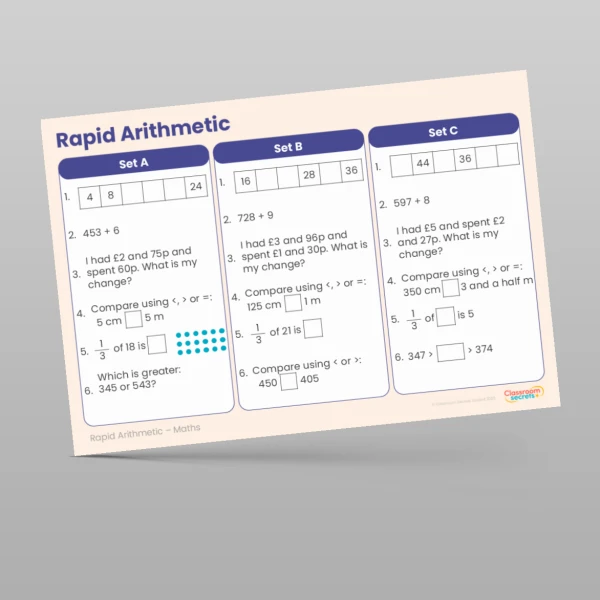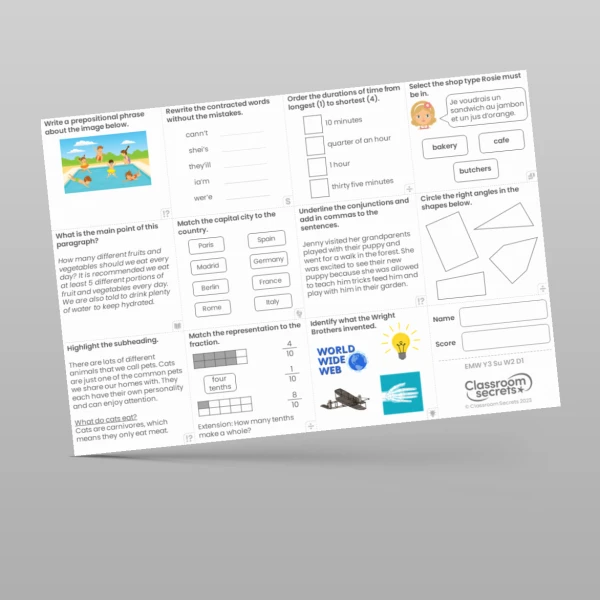

Consolidate previously taught objectives and build children's confidence in maths with this Year 3 Rapid Arithmetic resource. There are three sets of questions which have been differentiated into three levels of challenge to meet the needs of a range of learners. We've specially designed this resource to be displayed on the interactive whiteboard to save on printing costs. It's ideal to use during registration, at the start of a maths lesson or whenever you have some time to fill. Download today!
Curriculum Objectives
- Recognise, find, name and write fractions 1/3 , 1/4 , 2/4 and 3/4 of a length, shape, set of objects or quantity
- Write simple fractions for example, 1/2 of 6 = 3
- Recognise the equivalence of 2/4 and 1/2
- Count from 0 in multiples of 4, 8, 50 and 100
- Compare and order numbers up to 1000 / Read and write numbers up to 1000 in numerals and in words
- Find 10 or 100 more or less than a given number
- Recognise the place value of each digit in a three-digit number (hundreds, tens, ones)
- Identify, represent and estimate numbers using different representations
- Solve number problems and practical problems involving 3N1 - 3N4
- Add and subtract numbers mentally, including: three-digit number and ones; three-digit number and tens; three-digit number and hundreds
- Add and subtract numbers with up to three digits, using formal written methods of columnar addition and subtraction
- Estimate the answer to a calculation and use inverse operations to check answers
- Solve problems, including missing number problems, using number facts, place value, and more complex addition and subtraction
- Recall and use multiplication and division facts for the 3, 4 and 8 multiplication tables
- Write and calculate mathematical statements for multiplication and division using the multiplication tables that they know, including for two-digit numbers times one-digit numbers, using mental and progressing to formal written methods
- Solve problems, including missing number problems, involving multiplication and division, including positive integer scaling problems and correspondence problems in which n objects are connected to m objects
Tags
Spring
2F1a
2F1b
2F2
3N1b
3N2a
3N2b
3N3
3N4
3N6
3C1
3C2
3C3
3C4
3C6
3C7
3C8
Rapid Arithmetic











